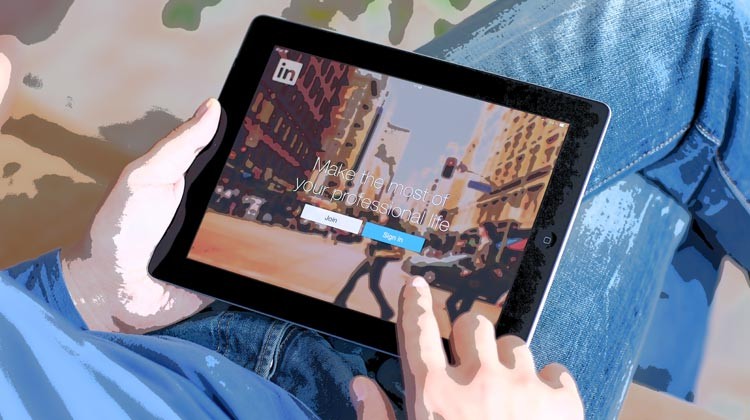6 Reasons Why You’re Coming Up Short on LinkedIn
by Jacob Baadsgaard • November 15, 2017
Not getting results on LinkedIn? There’s probably a pretty good reason for it.
LinkedIn is the most popular professional networking site and it’s helped me find clients and contract workers in addition to helping me connect with industry peers. Whatever you’re looking for on LinkedIn, you can probably find it.
Not everyone has the same level of success with LinkedIn, however, and a lot of that has to do with how they’ve created their profiles and how they use the site. In this post, we’re going to go over the six most common reasons why you’re coming up short on LinkedIn and how to change it.
1. You Aren’t Active On the Site
If you aren’t active on the site, you aren’t going to get a lot of traction on LinkedIn. It’s just like any other platform: you get out what you put in.
Interact with other users and their content when it shows up in their feed. Post your own content. Share content, and tag users who created it in the post. Actively reach out to other users that you’d like to connect with instead of sitting around and waiting for them to come find you.
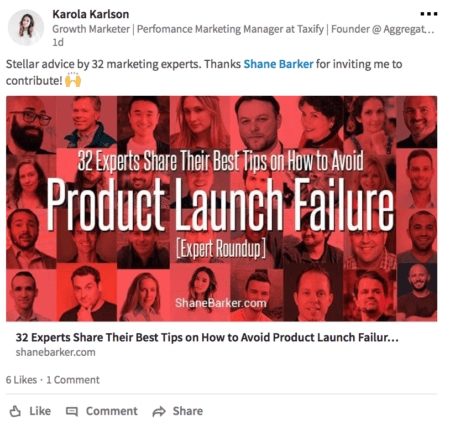
Make sure that your profile is fully-fleshed out,and that you’re sending messages to people who reached out to you first to start to build relationships with them. Don’t just sit there like a bump on a log, expecting everyone else to do the work for you.
2. You Aren’t Sending Connection Requests
Finding people to connect with is a big part of LinkedIn. Sometimes, you’ll connect with people that you already know. In this case, sending a message when connecting isn’t a necessity.
In other cases, however, you’ll be trying to connect with someone that you haven’t met yet, or that you aren’t on close terms with. This could be someone you met briefly at an event a few months ago, or someone at a complementary business that you think you could establish a mutually beneficial relationship with.
In these cases, you should always send someone a personalized connection message.
You can even create a set template for these messages and adjust them accordingly. A quick, “Hey Julie, I loved your last article you shared and would love to connect” or “Hey Bob, it was great meeting you at the ASJA conference in March! I’d love to stay in touch” can tell the other person why you want to connect and what value you can potentially offer them.
3. You Only Try to Get Things from Other People
Everybody wants something on LinkedIn and that’s fine. We all want to grow our businesses or get new clients, or find a better, higher-paying job. There’s nothing wrong with that and we all use LinkedIn acknowledging that fact. But here’s the thing. You can’t be a narcissist or a spammer about it.
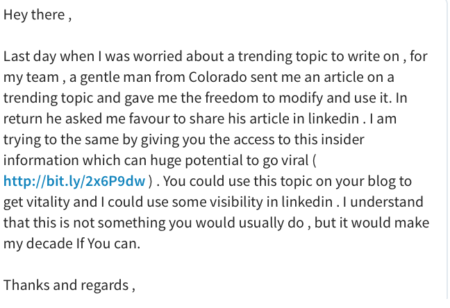
Just like with all social networking, people who seek out mutually beneficial relationships will be the ones who do the best on the site. People who insist on me doing free work for them get deleted almost instantly or those who just message me to ask to link to their product in my next blog post without any relationship building first.
Friendly, non-aggressive introductions are the way to go, just like at any networking event. Don’t be the guy shoving business cards into people’s hands without taking the time to get to know them at all. People will avoid you.
4. You Haven’t Optimized Your Profile for Search
Making sure your profile is findable in search on LinkedIn is just as important as it is on every other platform. This is one of the best ways to give your profile instant visibility to the people actively looking for you (second only to upgrading to a paid LinkedIn account or using LinkedIn Ads, which also offers these benefits).
My profile’s tag line, for example is: “CEO at Disruptive | AdWords & Conversion Experts” I used each term specifically so that I would show up in searches for each.
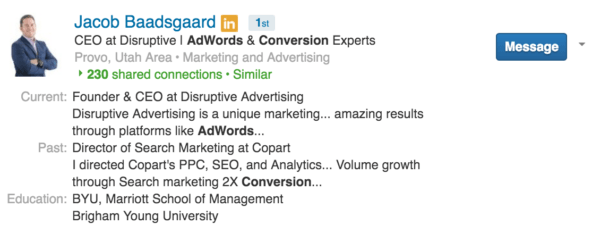
Think about what your clients or potential employers will be looking for when they’re searching. Test different phrases and keywords every so often to see what works best for you.
5. You Aren’t Getting (or Giving) Recommendations
Recommendations will help you stand out on LinkedIn. We do, after all, live in a world where anyone can declare themselves an expert and a CEO (even of their single-member LLC), so having customer, employer, or colleague testimonials to back up what you say will do you a lot of good.
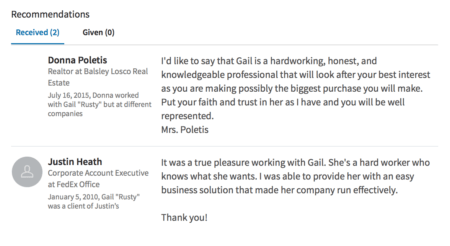
Ask colleagues and clients to leave you a recommendation on LinkedIn. In addition, giving out recommendations on LinkedIn can be a great way to improve your relationships with other people—which is the point of LinkedIn, right?
6. You’ve Chosen the Wrong Picture
LinkedIn isn’t Facebook. Your profile picture should be nothing but a professional headshot of you, or the closest thing you can find to it. You want your face to be clearly visible, and for the picture to be high quality. It doesn’t have to be formal, with you wearing a suit and smiling stiffly in front of a grey background, but it should be business casual at the absolute least.
Smiling pictures, like the one pictured below, will get more results on LinkedIn than expressionless faces.
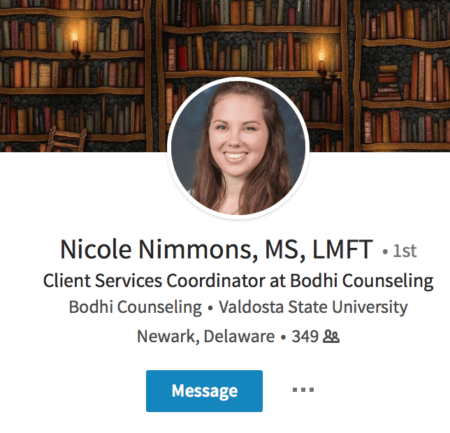
There are a few types of pictures that you’ll see all over LinkedIn that you should never use (and for good reason!). These include:
- A wedding day picture, especially a picture of you alone in your wedding dress if you’re the bride. This isn’t Facebook, after all, and this can be a blur of personal and professional. You’d never wear a wedding dress to work, after all. For women in particular, it also sometimes signals that you might be starting a family soon, which some employers might try to avoid (right or wrong, it is the reality).
- A college graduation picture. Having a college graduation picture on Facebook reads as accomplishment, but on LinkedIn employers see one thing: inexperienced. In a competitive job market, it’s not a good idea to emphasize how new you are in the field. Instead, play up what you’ve done.
- A blurry, full-body shot where you’re wearing sunglasses. That from-the-distance landscape shot of you standing on a mountain? Gorgeous profile picture for any other site, but it’s not ideal on LinkedIn. If people can’t see your face clearly, they’re less likely to engage with your profile.
- Selfies. Let’s all say it together: no selfies for LinkedIn, please. Especially selfies containing duck lips, thumbs up, or pretty much anything other than a simple smile.
The right picture can make a big difference, so pick your picture wisely!
Conclusion
LinkedIn is a potential goldmine for professional networking. Whether you’re looking for new jobs, new clients, new employees, or new industry connections, you can find it on the site as long as your profile is fully optimized and you’re active on the site.
What do you think? Do you get good results from LinkedIn? How do you use the site? Which of these reasons for falling short on the platform do you see most often? Share your thoughts in the comments below!

